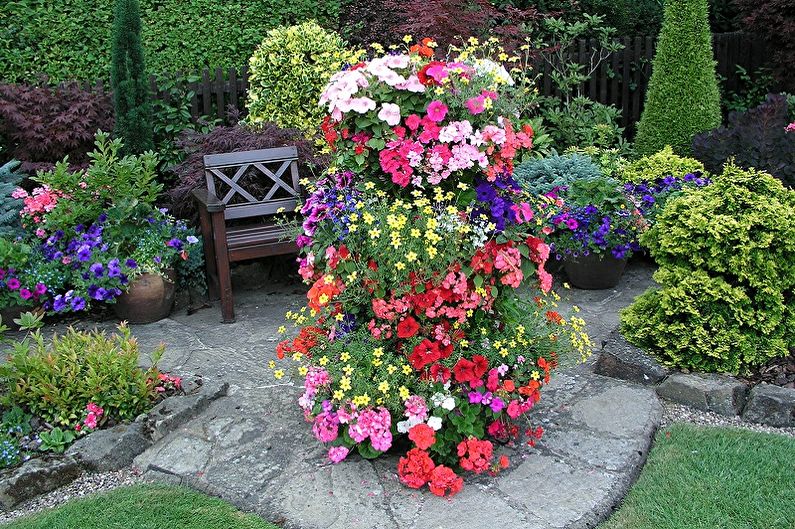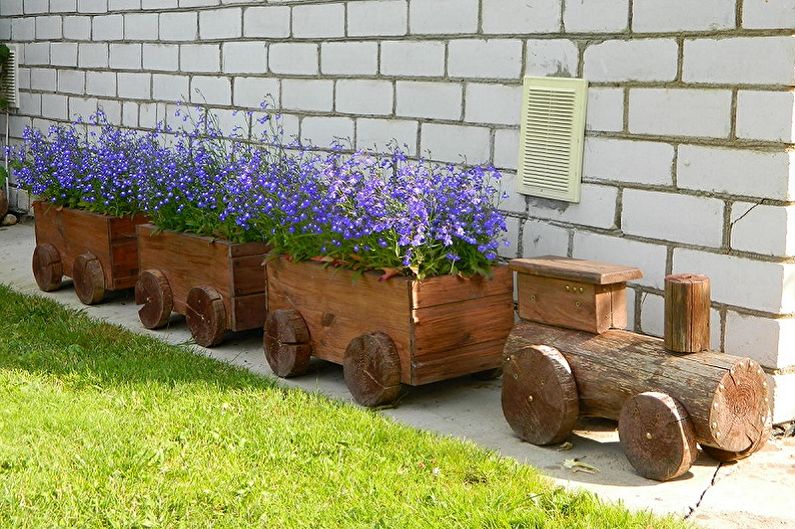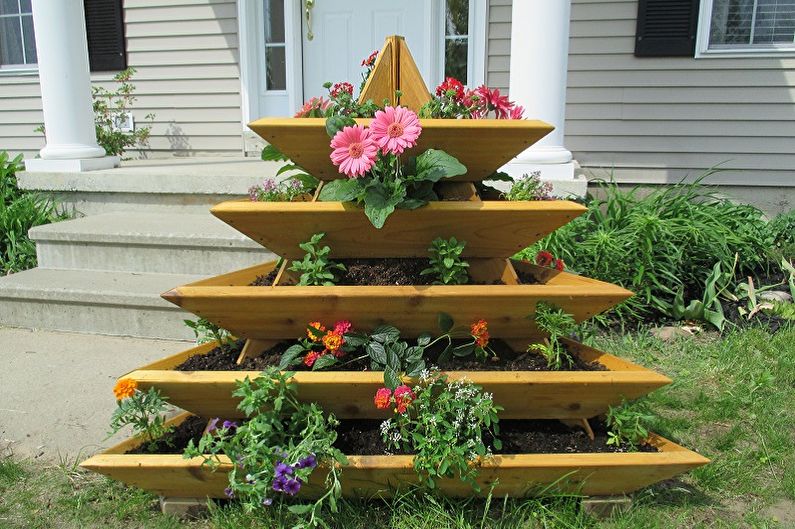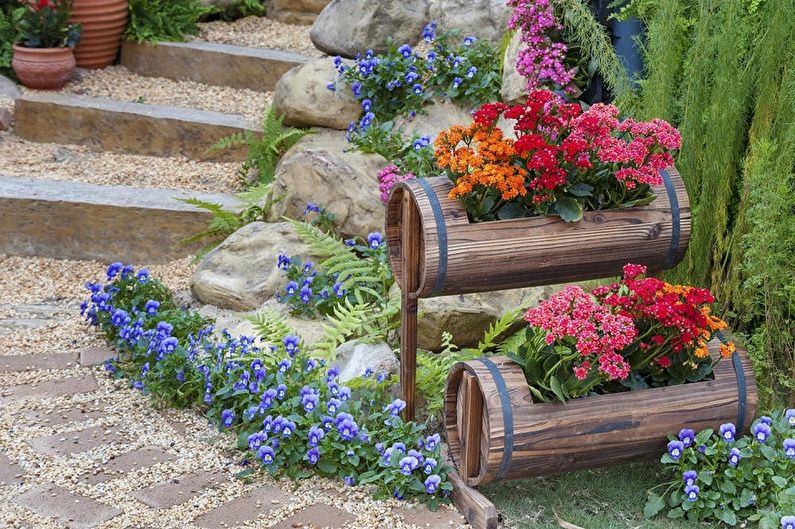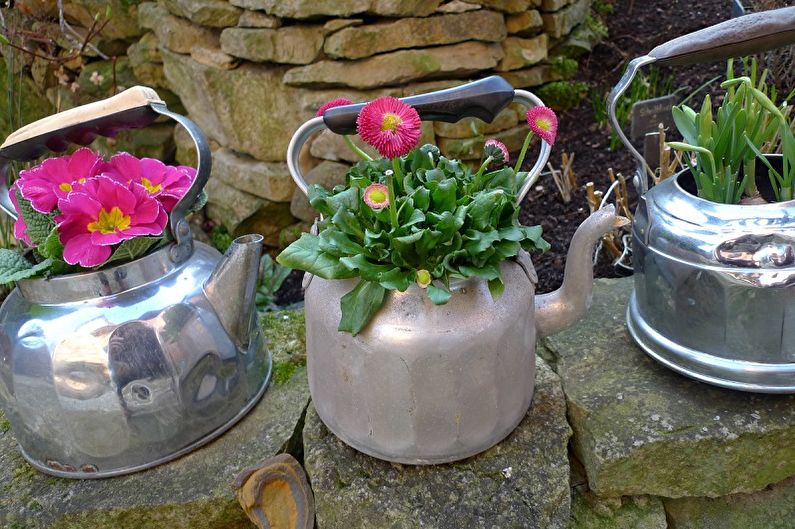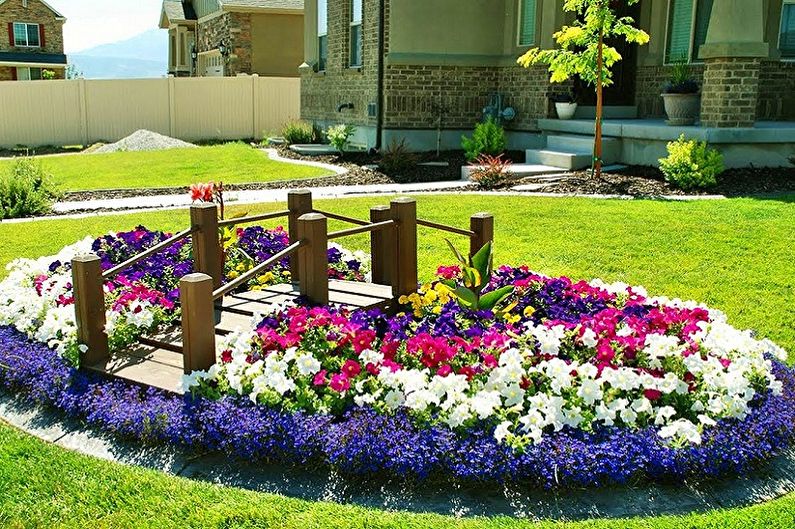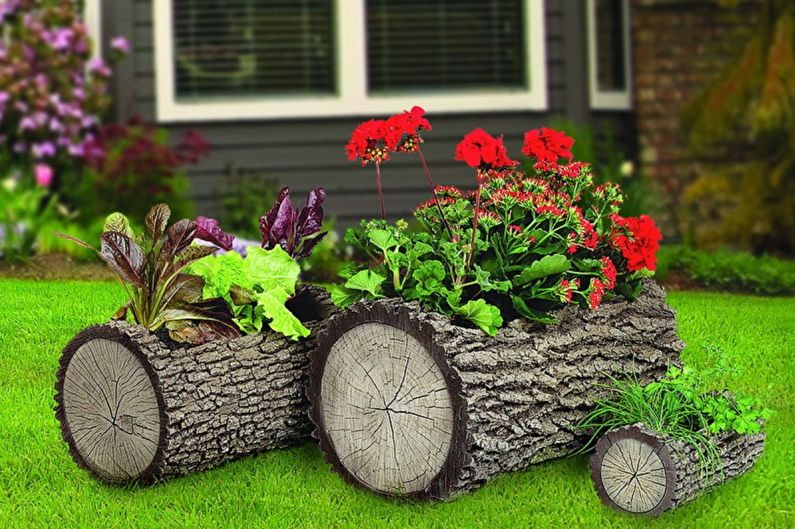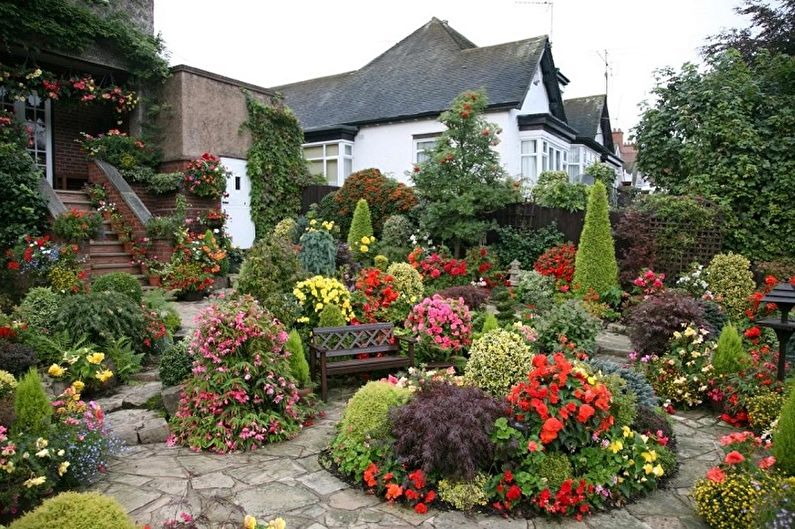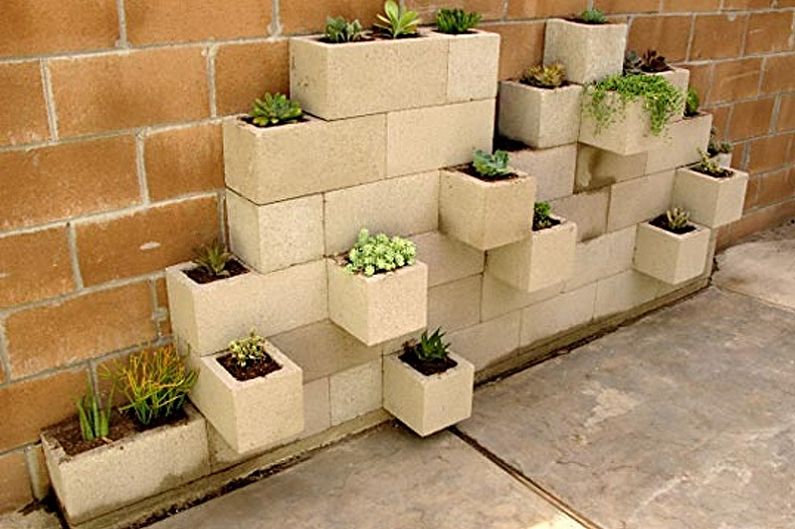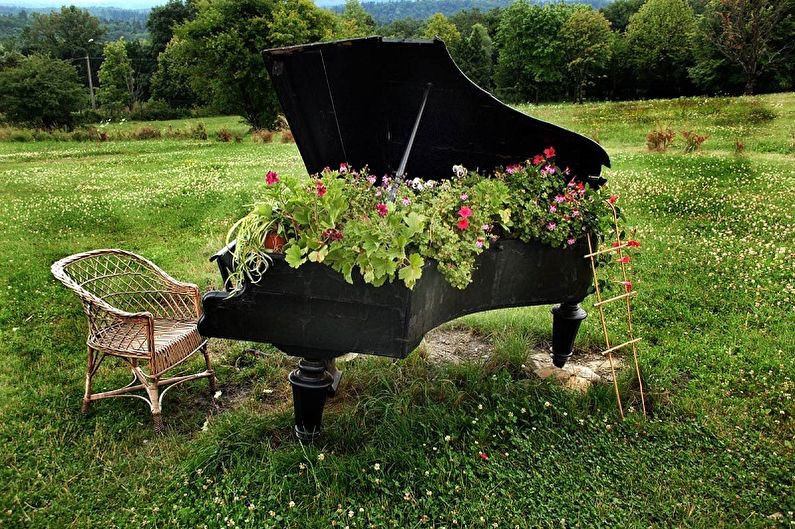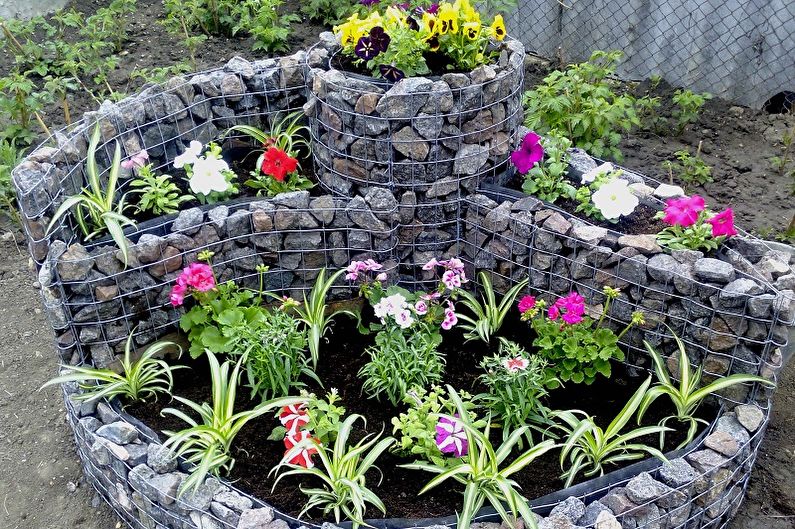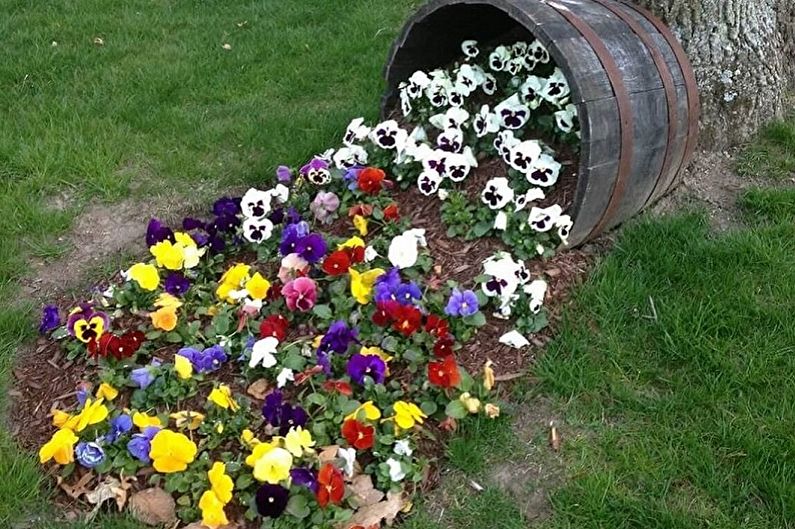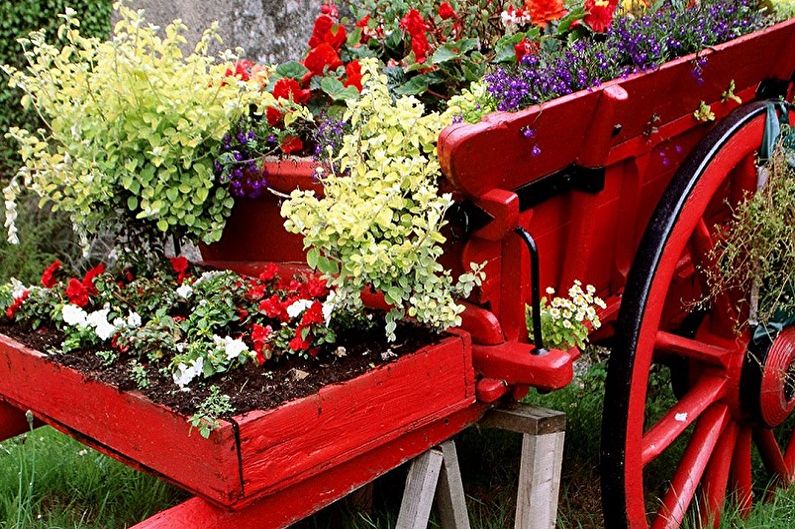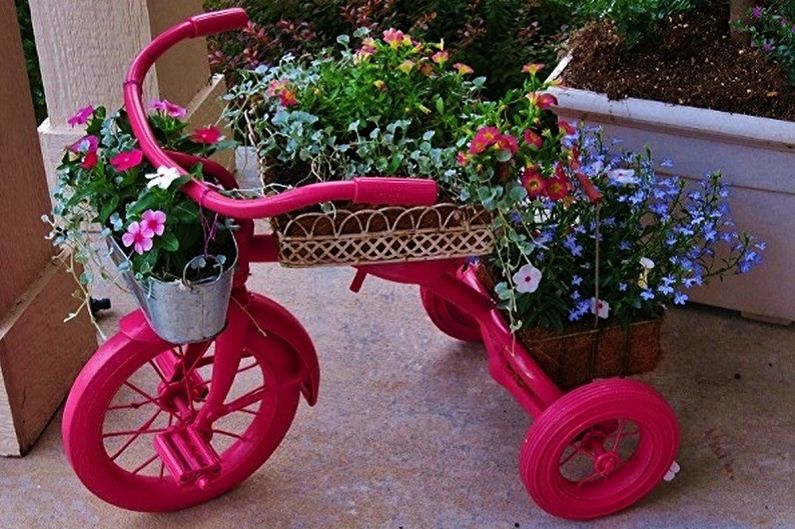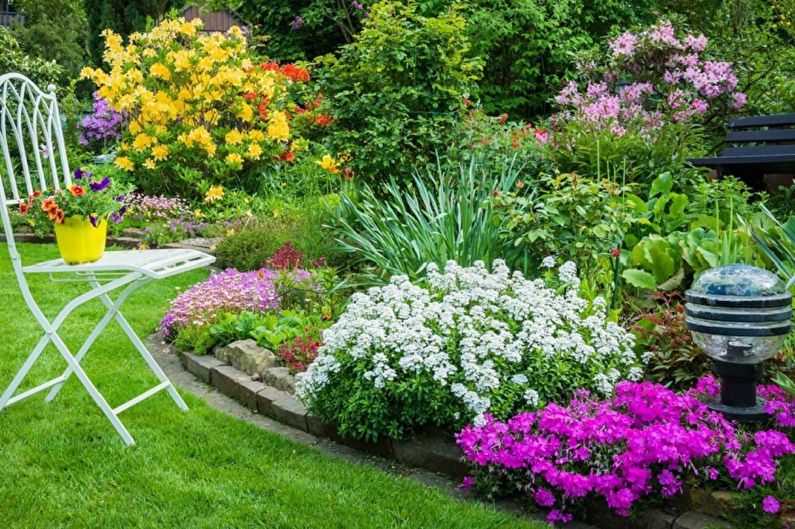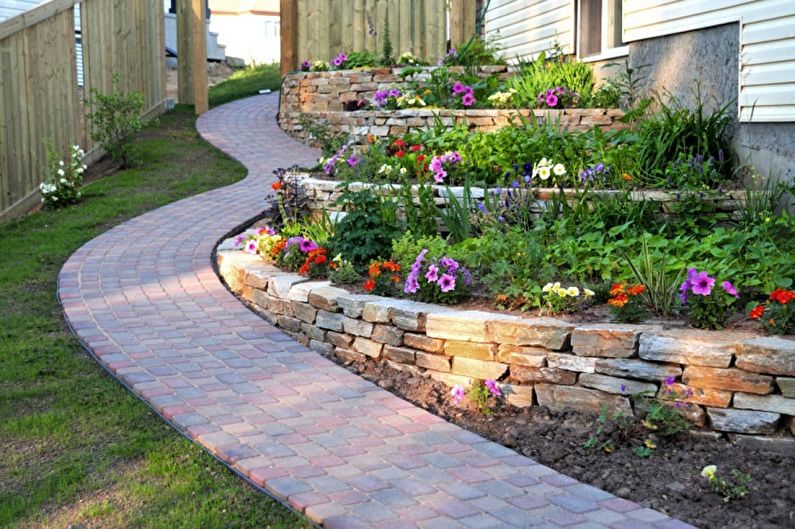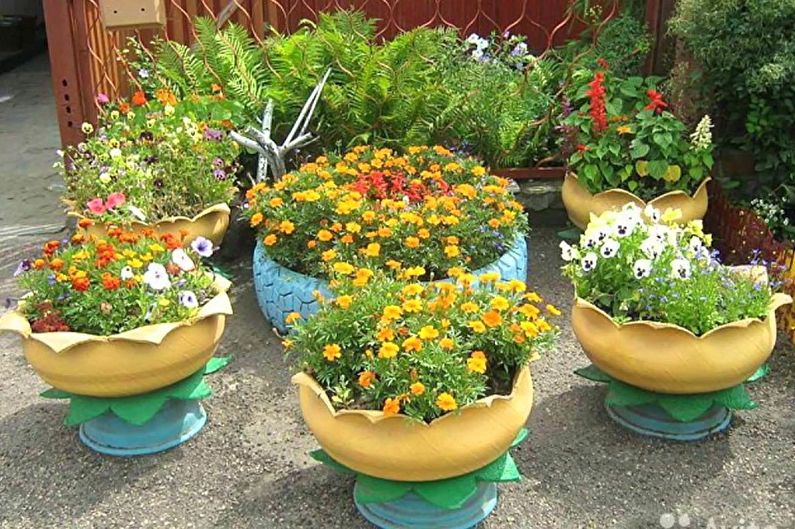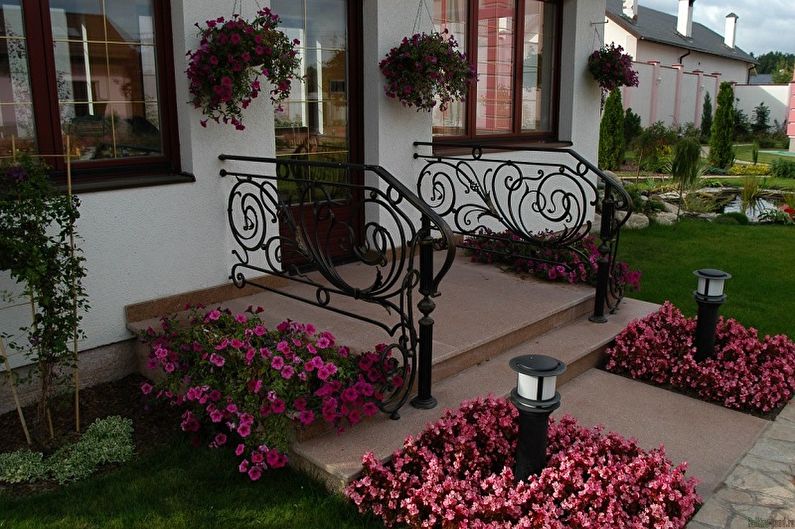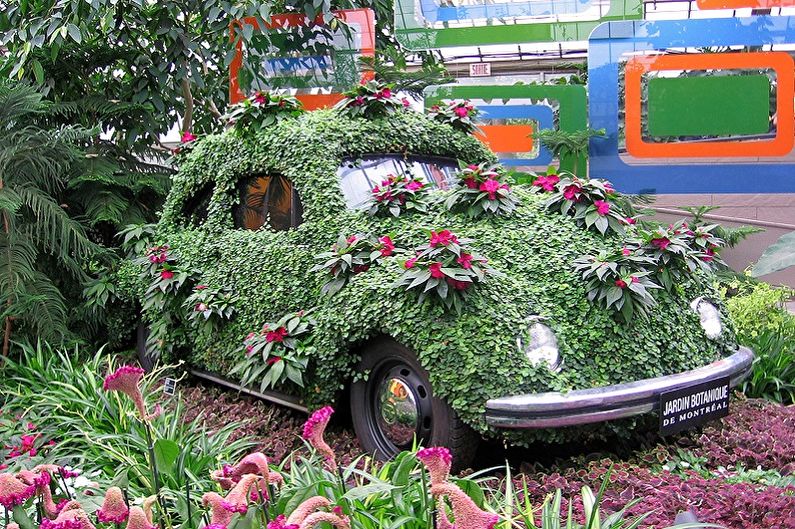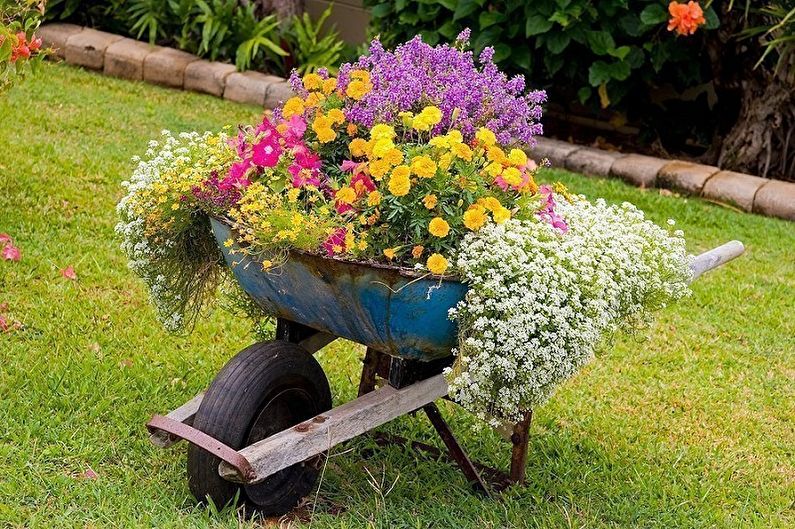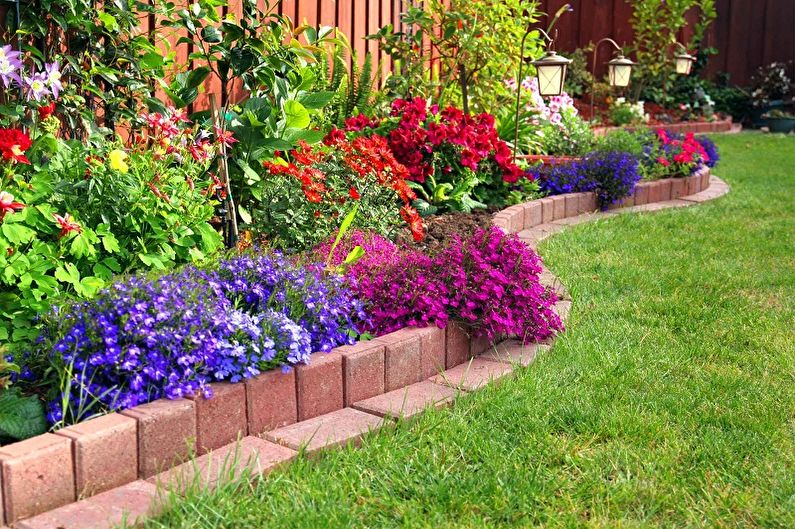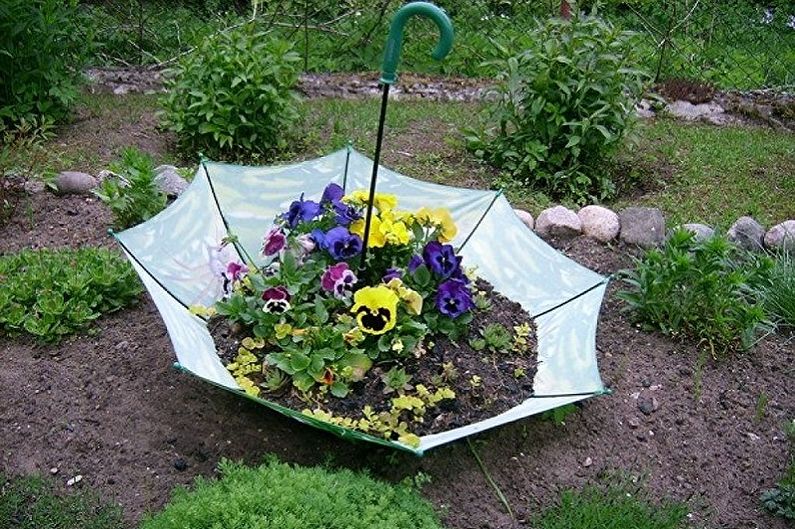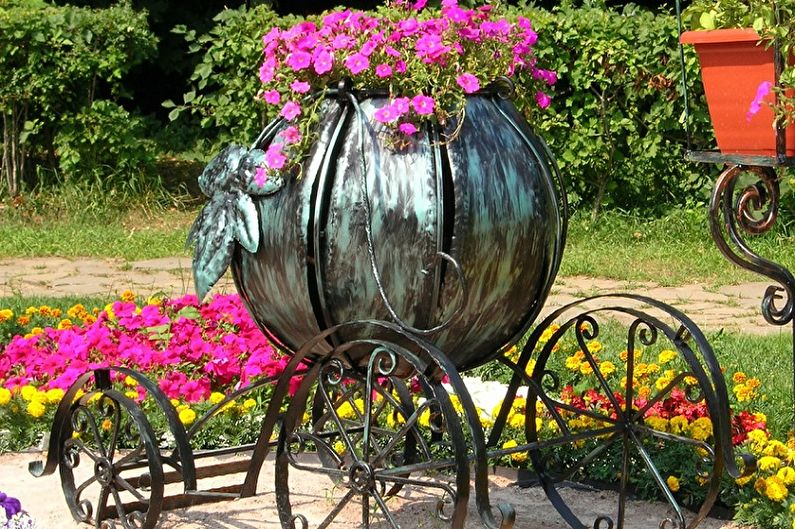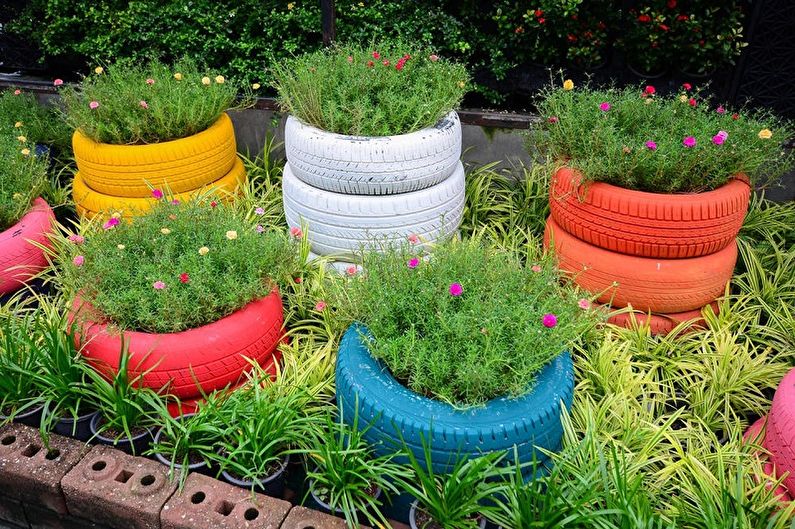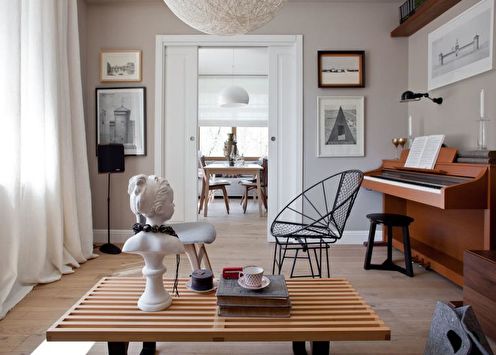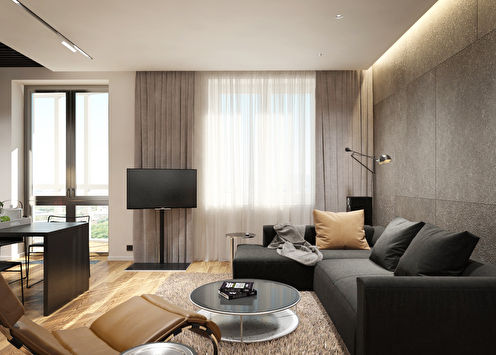
The cottage is an excellent place for a good rest in nature, so the landscape design of the site is of no small importance. The organization of flower beds with your own hands is an excellent and inexpensive way not only to add a twist to the design of the house territory, but also the opportunity to admire and be proud of your own creation. If you approach the matter with imagination, you can build original masterpieces that will undoubtedly arouse the interest of guests and become a delight for the owners of the house.
Where to start: general tips
The organization of flower beds with your own hands is not only interesting, but also quite troublesome. First of all, you need to decide on the place where the flower garden will be located. A good option is to immediately place two or three flower beds on a site in which to place crops that delight with their color in different periods. There are many other options!
Location
Often, lush flower beds are planted at the entrance to the house or near the garden gazebo - then they greatly ennoble the buildings. If you decide to place a flower planting in the back of the garden (a good option for shade-loving crops), you need to take care of free access to it by filling out the path.
Flowerbeds can serve as garden fences, framing paths or individual zones. Flower beds can be of various shapes - square, rectangular, round, oval or disproportionately curly. Mixborders are an attractive option, where plants make up a certain pattern.
Flowerbeds can also be encircling, enveloping ponds and trees, located in islands (standard options), have a stepped structure, which is a vertical landing. The latter option allows you to save a useful place in a small area, as well as become an amazing unusual decoration of the landscape.
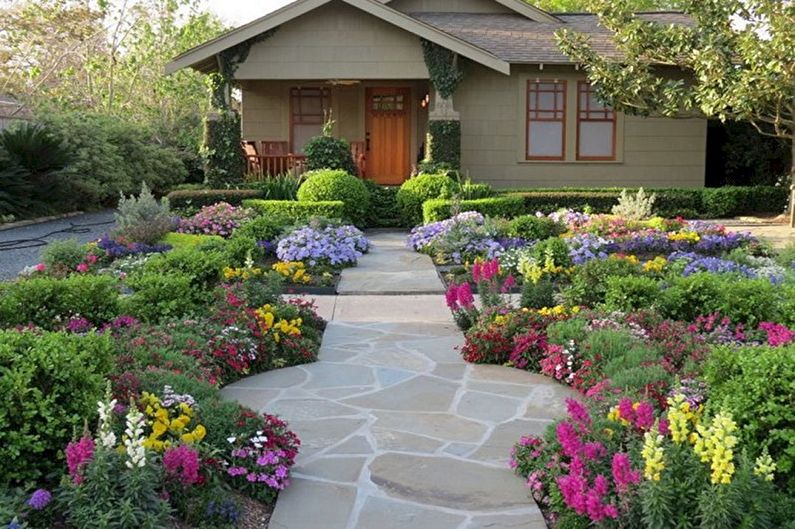
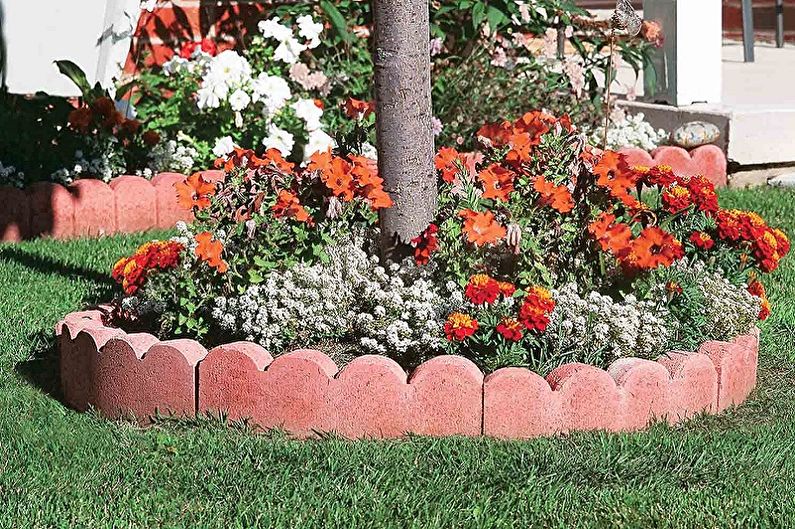
Technical points
If you are planning to organize a flowerbed with your own hands on a site on the site of the lawn, you must first draw up a plan for its placement and "filling" on paper, following which it will not be difficult to plant a flowerbed. When the plan is ready, in place of the future flower garden you need to remove the layer of upper soil, about 20 cm high, and fill in fresh fertile soil. A fence is formed along the perimeter of the flowerbed, which can be designed independently from a wide variety of materials (more on this in the article below).
To make the flowers feel as comfortable as possible, it is better to take care of the irrigation system, which will help to evenly distribute moisture and fertilizers throughout the area of the flower garden. To do this, a hose with holes made in advance is laid out throughout the territory of the site. If a centralized water supply is connected to the site, the hose can be connected directly to the tap. If there is no supply, use a pump.
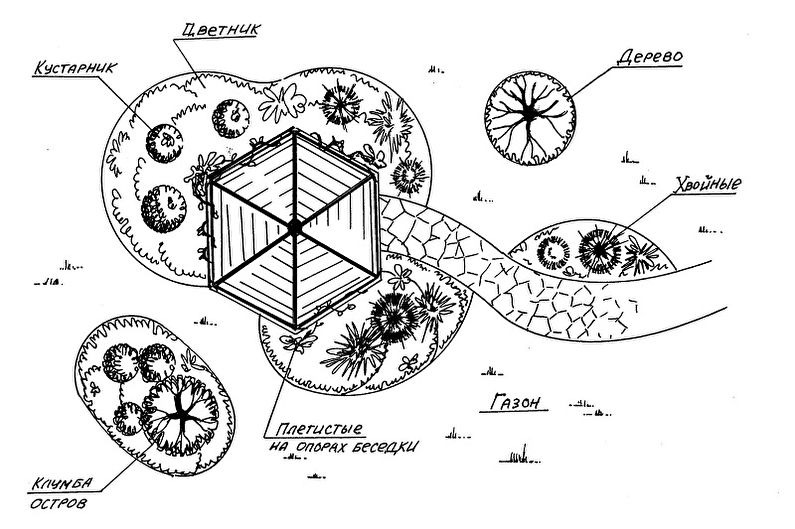

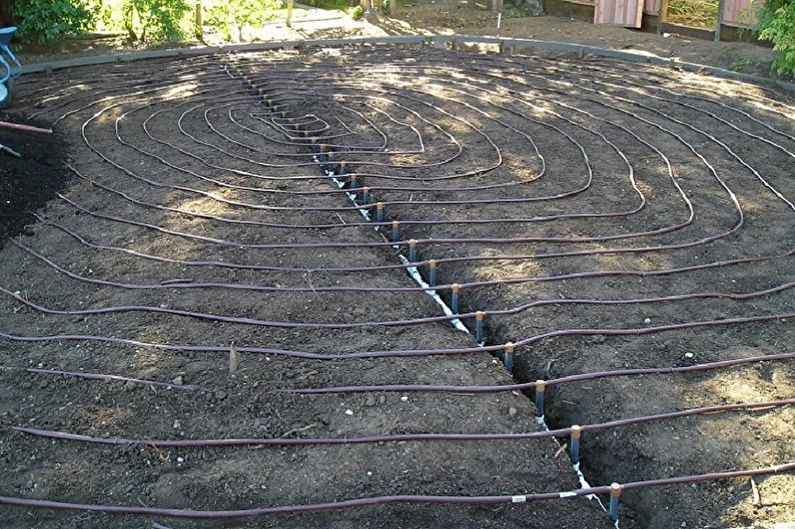
Rules for choosing colors
Flowers, undoubtedly, are the best decoration of a summer cottage, but at the same time, they require a lot of attention. It is better for beginner gardeners to plant perennials that perfectly tolerate all the hardships of changing environmental conditions and do not require care.
To choose flowers for planting, you need to familiarize yourself with their basic characteristics, rules of maintenance and care. In particular, this concerns the height of the flower, from which it will depend on how far the plants are planted in the flower garden and in which place.
Flowers in flower beds should be placed in an orderly manner. So, in an oval flower garden, the height of plants varies from the highest in the center to the lower to the edges.Climbing plants are planted along fences, arbor walls and other small architectural structures. On the flowerbed adjacent to the wall of the house or the fence, the background will be occupied by tall flowers, the central part will be stunted, and groundcover will blossom in the foreground. Thus, each flower will receive a sufficient amount of light and look great without being hidden in the shadow of more tall crops.
When planting flowers, it is necessary to take into account the density of planting so that they can develop normally. Usually, the plants are planted more densely along the edges of the flower beds, and less often towards the center. The flower garden should correspond to the landscape design of the site, and the representatives of the flora located in it should be perfectly combined with each other, both in external beauty and in terms of care. It is important to pay attention to the compatibility of different cultures, so that some of them do not cause damage to others.
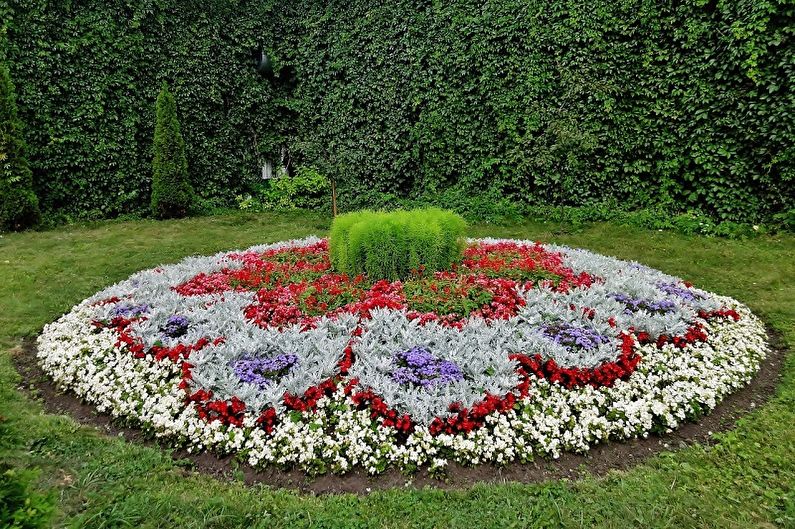

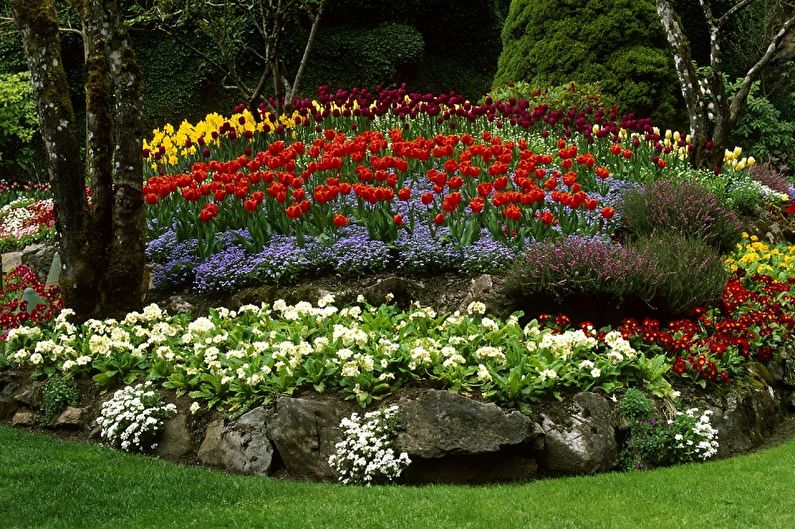
Making flower beds with your own hands
In the creation of flowerbeds on a personal plot, an important role is given to design, thanks to which the most unexpected ensembles are created. Skillful and quick-witted summer residents use a variety of materials for this, from brick, stone and ending with elementary materials at hand.
Brick
One of the common materials for creating flowerbed fences is brickwork. Most often, red brick is used, which adequately emphasizes the aesthetics of the flower garden. In addition, this option is highly practical - the brick easily withstands loads, humidity and whims of nature.
To make a fence, you will need a brick and mortar. After masonry is completed, it is recommended to plant flowers no earlier than two weeks later.
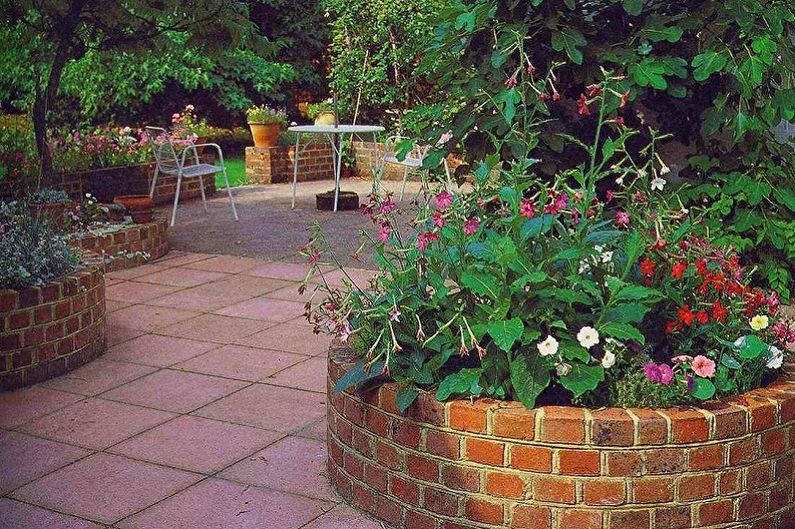
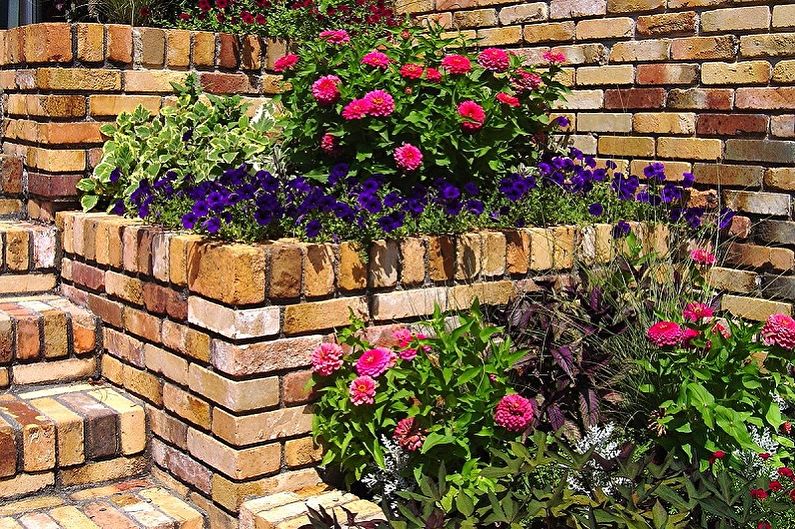
A rock
Quite economical material used not only in personal territories, but also in urban environments. For decoration, you can use a wide variety of stones: sandstone, limestone, slate, granite, quartzite. The most common option is pebbles. In order for the fence to stand for as long as possible, a cement base is formed before laying the stone. A flower bed made of stone with its unusual appearance can perfectly decorate any landscape design.
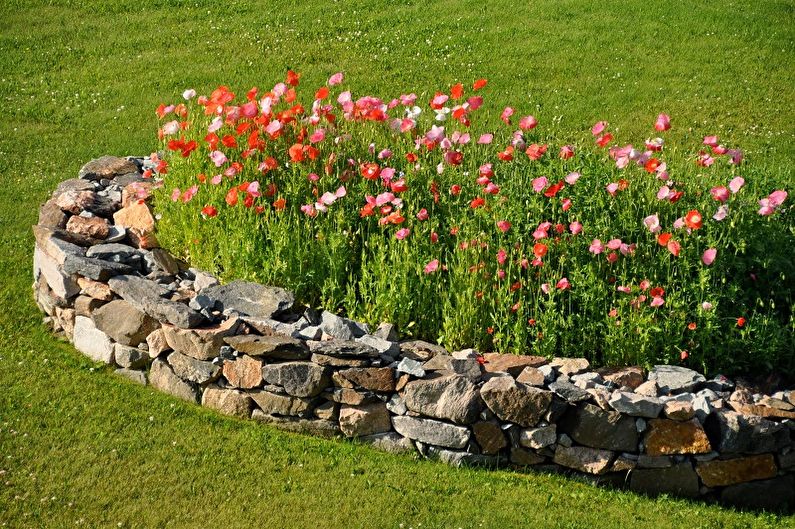

Metal
With the help of metal structures, you can create not only a reliable, but also a stylish, expensive-looking fence. To maximize the service life, the metal is coated with anti-corrosion compounds and special paints. Designs are made by forging, welding or casting. Often such things are made to order, which makes it possible to get the most sophisticated forms. The structures are mounted on a concrete base in full or only support columns are fixed.
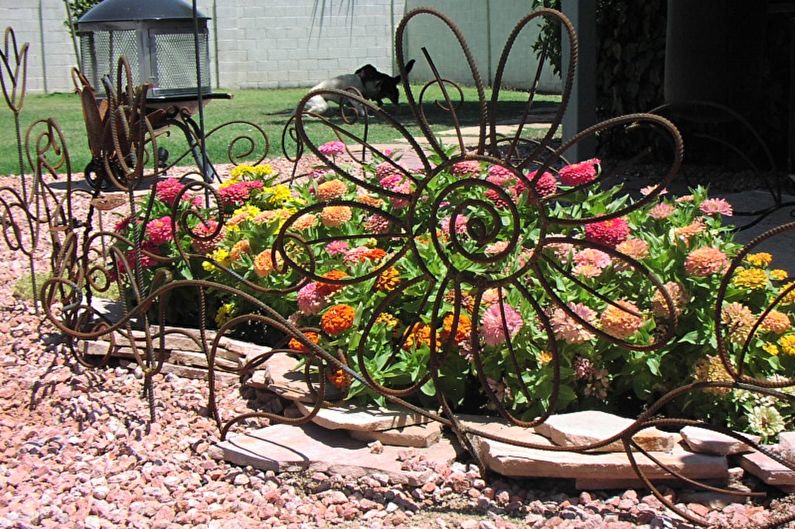
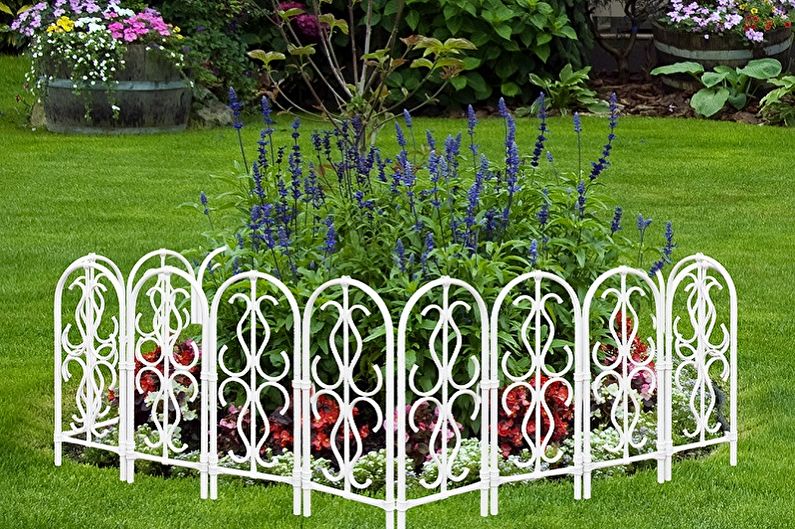
Wood
Wooden railings fit quite naturally into the natural landscape. The material will require special treatment, as the wood is quite picky about the influence of environmental factors. It is not difficult to make a wooden fence yourself. Most often, they use a picket fence, low picket fence, small logs, branches and a vine. Wicker fences, which fit perfectly into ethnic design, are especially attractive.
You don’t have to buy anything to create a fence - all the material (pegs and willow twigs) can be collected independently near the nearest reservoir. The design process is quite simple: on the perimeter of the flowerbed, at a short distance from each other, stakes are driven in, which are braided with rods according to the rules of basket weaving. Each row must be lightly tapped with a hammer to seal the canvas.
Original borders can be made out of driftwood, especially if the landscape involves wooden benches, antique objects of rural life. A small but very nice flowerbed can be made using the most common stump (deck) left after cutting a tree in a plot.
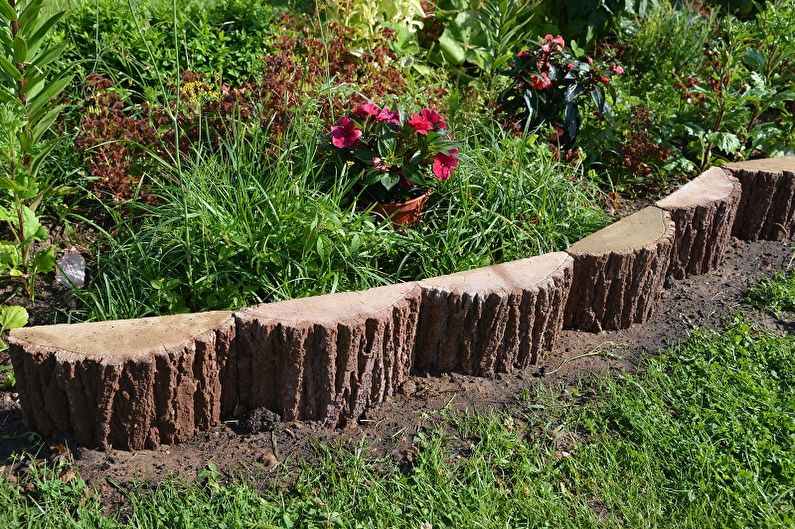

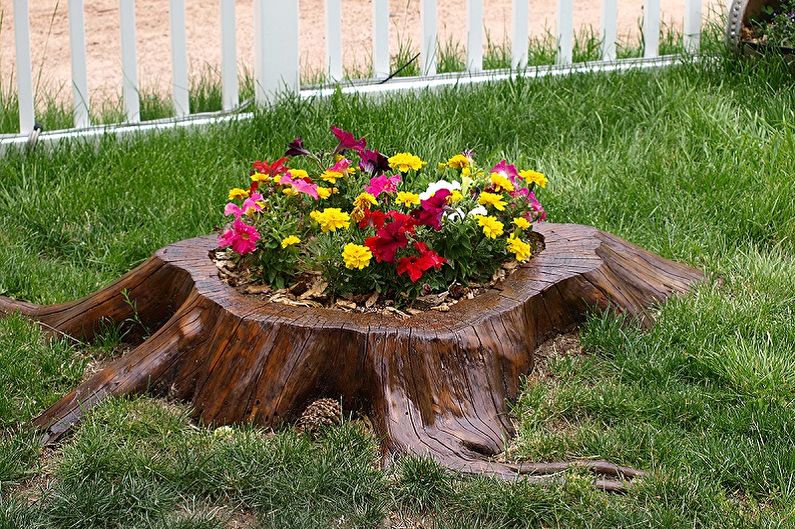
Materials at hand
The simplest, but very interesting design options for flower beds can be obtained using improvised materials. Much depends on the presence of unnecessary things and the imagination of the owners. Consider some options popular with gardeners:
1. The fence of the tires. A wonderful way to design flower beds, used by many summer residents. In this case, any used tires can be used, but imported tires are recognized as more elastic. Before installation, the tire must be cleaned of dirt, washed and painted in the preferred color. With the help of several tires, you can build a vertical flower garden with various plants. Some craftsmen carve real masterpieces from tires.
2. The border of plastic bottles. A wonderful way to get rid of the accumulated containers and beautifully designed flowerbed without extra costs. For these purposes, you will need to collect the required number of bottles of the same volume (usually 1.5 liters). They are set close together, with a neck in the ground. The finished fence can be painted or pre-filled containers with colorful pebbles.
3. Furniture. Old pieces of furniture can also be turned into original flower beds. If these are wooden items in the headset, they must first be treated with special moisture-resistant solutions. Typically, such gizmos are painted with bright colors.
Plumbing equipment, such as bathtubs, sinks, toilets, can also be used to organize flower beds. In such designs it is important to consider compatibility. For example, delicate forget-me-nots perfectly fill the space of flowerbeds, sinks, imitating soap suds, multi-colored annuals, reminiscent of a motley mound of clothes with their flowering, can be planted in the drawers of an old chest of drawers.
In addition to the above-mentioned ways to design flower beds with your own hands, you can use various other options. Sometimes flower gardens become the most unexpected objects, which over time have lost their direct destiny: an old bicycle, a trolley, an umbrella, and even a car.
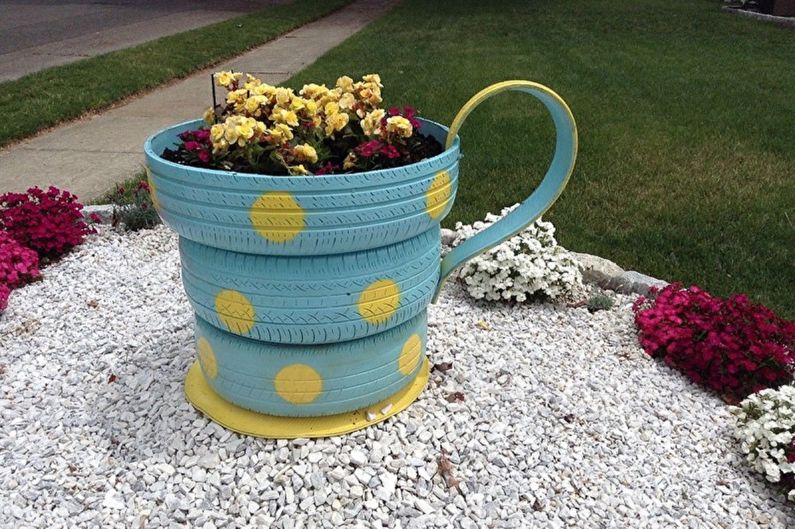

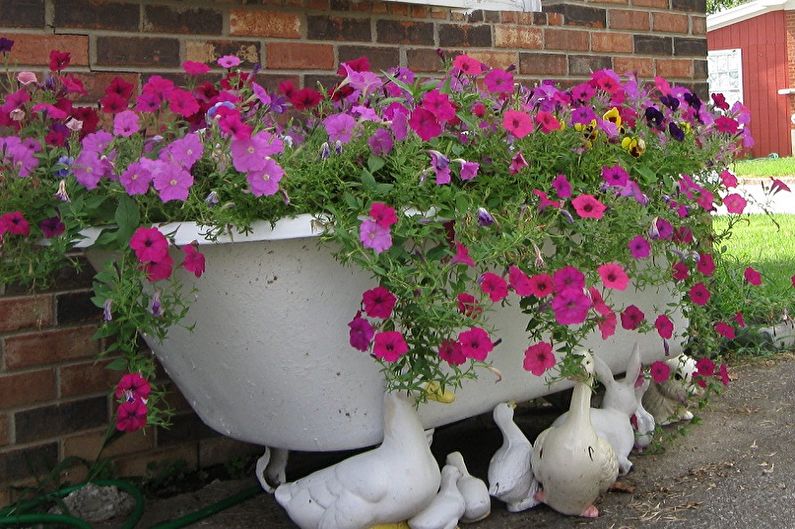
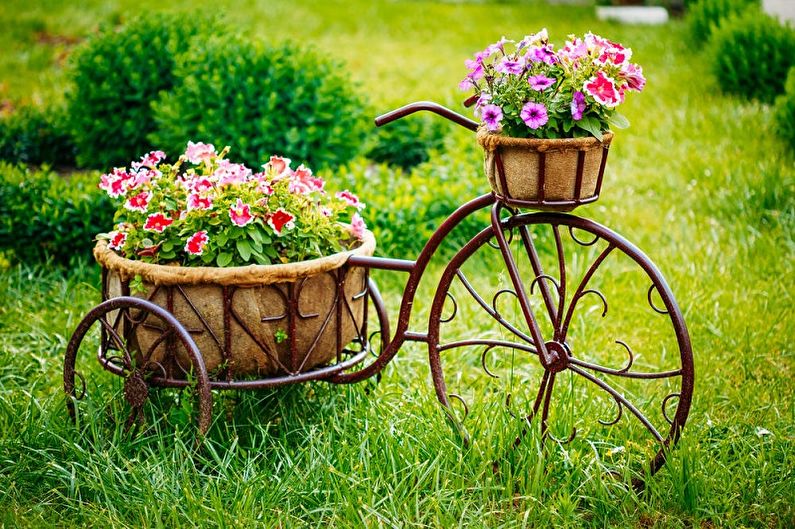
DIY flowerbed - photo
Creating flower beds with your own hands is the best option for placing flowers in a summer cottage. An organized planting with a beautiful fence looks much more aesthetic than flowers growing in a chaotic manner. You can see a lot of solutions on how to independently organize a flowerbed at the cottage in the further photo selection, where the best and rather original ideas are presented. Enjoy watching!
